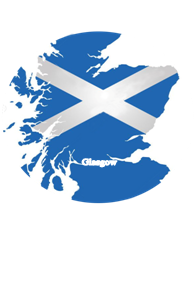With the gradual easing of lockdown restrictions, we are now including meeting details where we have been given them. However, this information should be regarded as optimistic, and we strongly advise you to check with organisers well before travelling. Above all, please observe any national or local restrictions, including social distancing. Isle of Avalon Amateur […]
Blackwood and District Amateur Radio Society has an open net on Sundays from noon around 3.703MHz. Friday sees an open net from 7pm on 144.575MHz FM. Live streams of both are at www.mw0mwz.co.uk/liveshack.php. Details from Rob, MW0CVT, via email to mw0cvt@sky.com. Carmarthen Amateur Radio Society has its 80m SSB net every Sunday from 2.30pm. Wednesday […]
Blackwood and District Amateur Radio Society has an open net on Sundays from noon around 3.703MHz. Friday sees an open net from 7pm on 144.575MHz FM. Live streams of both are at www.mw0mwz.co.uk/liveshack.php. Details from Rob, MW0CVT, via email to mw0cvt@sky.com. Carmarthen Amateur Radio Society has its 80m SSB net every Sunday from 2.30pm. Wednesday […]
Blackwood and District Amateur Radio Society has an open net on Sundays from noon around 3.703MHz. Friday sees an open net from 7pm on 144.575MHz FM. Live streams of both are at www.mw0mwz.co.uk/liveshack.php. Details from Rob, MW0CVT, via email to mw0cvt@sky.com. Carmarthen Amateur Radio Society has its 80m SSB net every Sunday from 2.30pm. Wednesday […]
This week’s Tuesday night lecture series by Mid-Ulster ARC featured a talk by RSGB Region 8 Regional Representative Philip Hosey, MI0MSO and then a Q&A with RSGB GM Steve Thomas, M1ACB – have a listen!
July 11–12, 2020
– The HF World Championship is an annual event to support amateur self-training in radiocommunications including improving amateur operating skills, conducting technical investigations, and intercommunicating with other amateurs around the world, especially IARU member society headquarters stations, …
The IARUMS Region 1 Newsletter June 2020 is now available.Click on the link to read it! …
Information about the upcoming IARU Region 1 General Conference is available at a dedicated conference website at https://conf.iaru-r1.org/. Documents for the virtual part of the conference to be held 11–15 October 2020 are now being published. The deadline for submission …
The news headlines:
Celebrate the NHS with Get on the air to care
Contest Committee to relax Covid-19 rule
IARU appoints new EMC Coordinator
GB2RS Script – HERE .
CLUB NEWS
During the COVID crisis a list of known club nets, and activities, is now being published on the West of Scotland Amateur Radio Society (WoSARS) web site. They have a table listing times and frequencies and this can be found at
https://wosars.club/radio-nets/
Also, WoSARS is trialling a new Daily Morning Net on 145.425MHz @ 1100hrs local. As well as WoSARS Members, the Net is open to all licenced amateurs.
And, as noted in last Sunday’s GB2RS the following:
CANCELLATION – Lomond Radio Club – Crianlarich Rally Sunday 2nd August cancelled.
CANCELLATION – the Cockenzie and Port Seaton Mini Rally/Junk Night on Friday 14th August has been cancelled.
CANCELLATION – GMDX Conventition – Bannockburn – October, cancelled.
All other News Items relate to the Club Nets. Checkout the above LINK .
The RSGB’s Get on the air to care campaign with the NHS is celebrating the 72nd birthday of the NHS on Sunday, 5 July 2020. The Society is encouraging all radio amateurs to Get on the air to care to mark the celebration and to use /NHS after their call sign. Share photos on the […]

